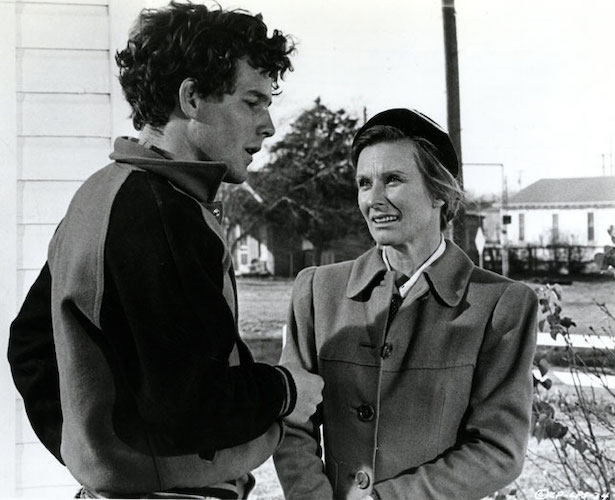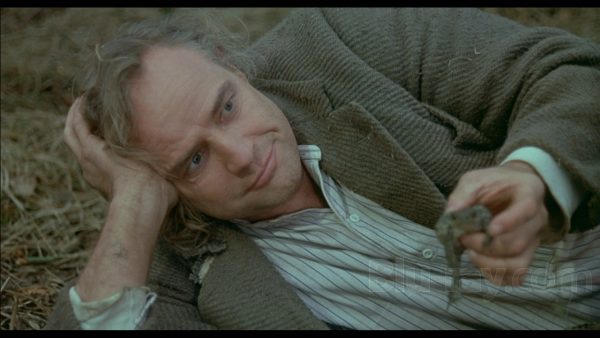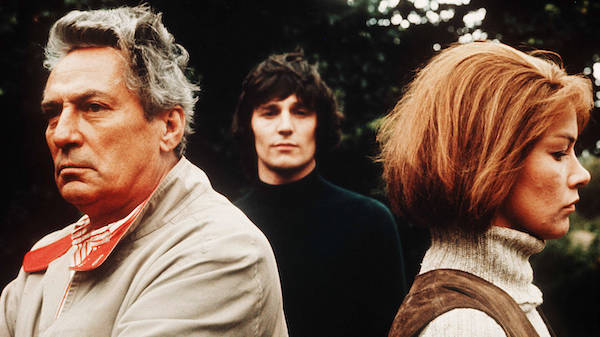Arts Reconsideration: The 1971 Project — Celebrating a Great Year in Film (Part Two)
Compiled by Bill Marx
Could this be a case of reviewer envy? After seeing the magazine’s music critics pay monthly homage to 1971 as a monumental year for music, the Arts Fuse‘s film critics immediately registered — en masse — their belief that 1971 was also a great year for film. And they demanded that they be given an opportunity to write about their favorites. What is an intimidated editor to do but give way to such enthusiasm? The picks this time around resonate with what Ezra Haber Glenn, in his piece on The Last Picture Show, calls America’s “slow-burn crisis of confidence,” “a loss of innocence and loss of direction.” Peg Aloi characterizes this as innocence tainted in The Nightcomers, a prequel (of sorts) to Henry James’s The Turn of the Screw.
I would point out from my editorial perch that the word provocative is key when looking at the movies of that year. This was the last gasp of the rebellious artistic/political energy of the ’60s. The end of the Vietnam War in 1975 quelled the era’s mounting activism — there was no more draft. Martin Luther King’s challenges to the counterculture to end racism and create a more equitable economic system were forgotten as Boomers worked their proto-neoliberal asses off to consume their way to a comfortable lifestyle, culminating in the election of Ronald Reagan in 1980. It is telling that the lineup of superb films below dramatize the downside of rebellion. 1971 gave us bursts of magnificent iconoclasm that had no future — culturally or politically.
Part One of “The 1971 Project — Celebrating a Great Year in Film”
— Bill Marx

Timothy Bottoms and Cloris Leachman in The Last Picture Show.
Existential Nostalgia: The Last Picture Show at 50
It would not be until the post-mortem summary at the end of the ’70s that Jimmy Carter diagnosed our national “malaise” in his famous — and famously mocked — 1979 speech. Interestingly, the text itself makes no mention of this word. Our shared and unshakable memory that it was used perhaps reflects a collective hallucination, a rare moment of intuition and insight: this was, after all, a decade of searching and finding ourselves, even if what we found seemed empty, sad, misunderstood, and adrift.
But to those who knew where to look, the signs were there from the start, in the early years of the decade. They could be bought for the price of a dollar-matinee in the dark and empty movie houses of 1971, from Times Square to Texarkana, screening perceptively doleful films that shined a painful and pathetic light for (or on?) this generation, which was so busy searching for itself that it risked losing itself along the way. Many of the films selected for this feature from the strange “banner year” of 1971 contain the seeds of this slow-burn crisis of confidence. These particular banners are not the festive bunting of a victory parade, but rather the hollow commemoration of a flag-draped coffin marking a nation’s dual passing: a loss of innocence and loss of direction.
Nowhere are these threads tied so poignantly together than in Peter Bogdanovich’s The Last Picture Show. The film presents both unromantic nostalgia for the past and clear-eyed uncertainty about the future as it slowly tells the elegiac tale of the last days of the small town of Anarene, TX, circa 1951. As the leaves blow down an empty Main Street, the film bears simple witness to this act of fading, a ghost-town community slowly recognizing that it must have died sometime ago and not even noticed. Here are Sonny (Timothy Bottoms), Duane (Jeff Bridges), and Jacy (Cybill Shepherd), graduating seniors who stumble and fumble through life, love (or at least sex: think Bob Seeger’s classic “Night Moves”), and the unclear transition to adulthood; Sam the Lion (Ben Johnson), the last remaining city-father, owner of the titular movie house, the cafe, and the pool hall, who waxes passionately about how his life somehow lost its passion; Ruth Popper (Cloris Leachman), the socially alienated and sexually frustrated wife of the high school coach, already aged far beyond her 40 years — more widow-spinster than wife — seeking some human compassion and warmth; and an Altman-worthy cast of fleshed-out others — not “extras” — in a town where everyone is their own particular type of nobody.
Throughout, the dominant mode is hollow and spent: lives lived in the rearview mirror and the reflection at the bottom of a glass, not so much dread or angst, more just a dejected resignation, the feeling of longing when you don’t even know what you might be longing for. And yet, in the longing that lingers, we recognize an aftertaste of connection, humanity, a yearning to resolve the existentialist’s quandary: a hint of meaning, hidden in this fleeting space between the me and the we. “Each mortal thing does one thing and the same:/… Crying What I do is me: for that I came.”
There is also something magical about the timing of the film, made in 1971, set in 1951. In the same masterstroke with which he ushers in a new form of storytelling and cinema, the honesty of Bogdanovich’s American soul-searching connects the generations, reaching back to the Our Towns and Spoon Rivers, while also inspiring and foreshadowing years of nostalgia-to-come, from American Graffiti (1973) and Grease (1978) to Stand by Me (1986) and Dazed and Confused (1993).
Coda: The film’s themes of silent loss and shared humanity are rendered even more poignant and meaningful now, as we reflect back five decades past and mark the passing of both Cloris Leachman, who was already star enough in 1971 to play a woman fading away, and Larry McMurtry, who wrote the novel that became the film.
— Ezra Haber Glenn

Marlon Brando as Peter Quint in The Nightcomers.
The Nightcomers
This odd movie has much to recommend it, chiefly Marlon Brando doing a flawless and yet also rather ridiculous Irish accent. He plays Peter Quint, a diabolical ghost in Henry James’s celebrated novella The Turn of the Screw. Directed by Michael Winner (Death Wish) and penned by screenwriter Michael Hastings (Tom & Viv), The Nightcomers is a sort of prequel. It imagines what Quint was like when he was alive and serving as the valet and groundskeeper of a grand country estate, where two orphaned children live with their uncle (who is usually away on business), a housemaid, and a governess. The children, Flora and Miles (Verna Harvey and Christopher Ellis), are curious preteens who’ve been brought up to have good manners but devolve into psychopathic behavior at times. That may be due in part to their obsessive affection for Quint and his unusual outlook on life. He shows them the beauty of nature — but also its ugliness and cruelty. Brando plays Quint as a brash but romantic drifter, good-humored but moody; he is not particularly worried about the future and prone to being irresponsible. The man is a hard worker but his narcissistic ways make him a less than desirable employee. Still, he seems to have made himself indispensable on the estate.
The children also take an interest in Quint’s secretive affair with Miss Jessell, the governess (Stephanie Beacham). They watch as he manipulates his lover in a relationship that includes bondage and humiliation. In their childish way they try to imitate what they see; it’s rather unnerving to say the least, but mild compared to what comes later in the story. The chilling sociopathic behavior of these children reminds me of another English horror film released in 1971, The Blood on Satan’s Claw. There are also similarities with 1976’s The Sailor Who Fell from Grace with the Sea (also set in England, but based on a story by Yukio Mishima). These films all posit a cultural diagnosis common in the ’70s: young people were becoming more cynical because of the social upheaval of war, protest, and social change; they were becoming increasingly morally corrupt because of drug use, sexual experimentation, and rock music. In The Nightcomers, Flora and Miles may learn a few things from Quint, but their capacity for evil comes from within.
— Peg Aloi

A night out with Alex and the Droogs in A Clockwork Orange.
A Clockwork Orange (UK, USA)
Thanks to a very cool eighth grade English teacher with a book collection rivaling the library’s, I read Anthony Burgess’s A Clockwork Orange before I saw Kubrick’s relatively faithful adaptation. I was lured by the film’s notorious reputation and proto-punk iconography — probably from Bravo’s 30 Even Scarier Movie Moments, wherein the rape scene ranks number 2 — so I assumed Burgess’s novel would be as incendiary as the movie. I enjoyed it, yet all I recall about the book is trying to keep track of the Nadsat slang Alex and his Droogs use. My first viewing of Kubrick’s A Clockwork Orange alone in my mom’s basement is more memorable, admittedly because I found — and still do — young Malcolm McDowell sinisterly cute as Alex DeLarge.
More than the sublime visual, auditory, and sensory pleasures of Kubrick’s dystopian vision (including all the gratuitous shots of McDowell’s tight butt — thanks Stanley), what really fascinates me about Clockwork is the moral panic that once surrounded it. When the film premiered in New York in December 1971, critical reception was mostly praiseworthy, with some reviews praising the “theatrical nature of the violence” onscreen as boldly “unflinching.”As Joseph Darlington further notes in his article “A Clockwork Orange: The Art of Moral Panic?”, it was only a full two years later that UK tabloids began linking Clockwork to the murder of an elderly homeless man by a teenage boy, blaming the film for inspiring copycat violence among British youth. This moral panic grew to the point that Kubrick and his family began receiving death threats.
Under such duress, Kubrick voluntarily pulled his film from UK theaters. Though never technically banned, Clockwork wouldn’t grace film or television screens in its home country again until after the director’s death in 1999. This de facto ban is also the reason Clockwork is frequently lumped in with the UK video nasties despite never actually appearing on the BBFC’s list. It seems as if the manufactured moral panic over Clockwork served as a cultural test run for the conservative hysteria over sex and violence in movies that crescendoed in the ’80s.
But with the passage of time, Clockwork doesn’t seem to scare the execs at Warner Bros. like it used to: the film’s been available to stream uncut on Netflix since 2019, and in the first trailer for the long awaited Space Jam sequel Alex and his Droogs can be seen twirling their canes among a sea of CGI WB properties cheering on Lebron James and Bugs Bunny. None of this is to say that A Clockwork Orange no longer packs a punch — if anything, all the pearl-clutching and speculation over whether a film like Joker would drive young white men to go on mass shooting rampages indicates there’s still an audience ready to accuse Clockwork of glorifying male “ultraviolence” in complete bad faith. For me, A Clockwork Orange represents everything cinema should aim to be: artistically bold, confrontational, and speculative (if not prescient) about where society’s heading.
— Nicole Veneto

Peter Finch, Murray Head, and Glenda Jackson in Sunday Bloody Sunday.
Sunday Bloody Sunday
In his song “Triad,” David Crosby mournfully sings “You want to know how it will be/Me and her or you and me?” The muddle of polyamory not only surfaced in some of the music of the ’60s and the ’70s, but was also at the center of John Schlesinger’s film Sunday Bloody Sunday. Coming off the success of Midnight Cowboy, Schlesinger wanted to break away from the camp-ish portraits of homosexuals in that film and Darling. Sunday Bloody Sunday is an intimate look at middle-class Londoners who struggle to juggle their relationships. Unlike Carnal Knowledge, also released in 1971, the eroticism of Sunday Bloody Sunday errs on the side of verité-styled objectivity. There are none of Mike Nichols’s stagey bedroom screaming matches. Schlesinger’s scenes of isolation and bedroom bliss are tonier, amplified via bits from Mozart’s opera buffa Cosi fan tutte.
Bob Elkin (Murry Head) is a 20-something artist seamlessly passing between the bedrooms of his two lovers; Alex (Glenda Jackson), a divorcee in her mid-30s who is in the middle of a career change, and middle-aged Daniel (Peter Finch), a respected doctor/psychiatrist. The amicable arrangements between consenting adults are roughly tested midway through the film after Alex learns that Bob and Daniel are using the same party-line service as she does. Jackson’s obvious disappointment is accented by a tearful chuckle. The phone operator’s role in her sex life suggests that love is never uncomplicated.
Near the end of Sunday Bloody Sunday, when Bob leaves for New York, Alex and Daniel finally meet; there’s not a shred of bitterness or spite. Their brief conversation is innocuous — there is an air of concern over the man they both loved. Before the credits roll, Peter Finch’s Daniel looks straight at the camera, explaining to viewers how he misses Bob, even though he has learned that he was not the courageous and resourceful man he believed him to be at first. Although party lines have converted to cell phones and sexual mores have crossed (and recrossed) several boundaries since 1971, Sunday Bloody Sunday remains a heartfelt and mature look at the balancing act between happiness and heartache.
— David Stewart
Tagged: A Clockwork Orange, David Stewart, Ezra Haber Glenn, Nicole Veneto, Peg Aloi, Sunday Bloody Sunday, The Last Picture Show
